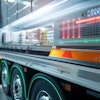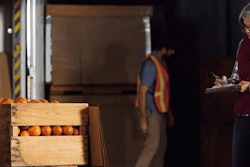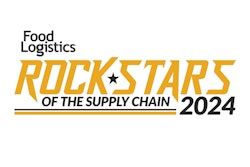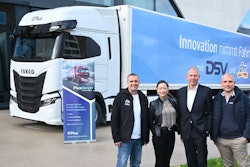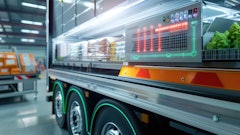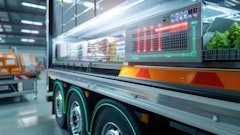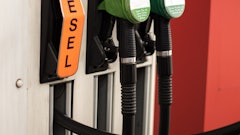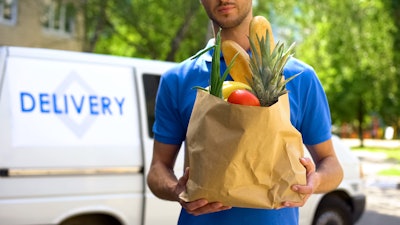
Last-mile logistics is challenging in any industry, but especially in the food industry. When delivering food products, timing is critical. Client expectations are often high, and proper temperatures — be they hot or cold — must be preserved.
To make matters more challenging, food delivery in many instances is managed by a minimum-wage, entry-level, part-time employee. Consequently, the efficiency, reliability, and expertise needed to ensure a solid customer experience can be lacking.
To address those challenges, businesses in the food industry are beginning to experiment with autonomous delivery vehicles. The option, which leverages artificial intelligence (AI) to empower driverless vehicles, promises to provide the industry with new capabilities to boost efficiency and profitability.
Efficiencies of autonomous delivery
Autonomous vehicles bring a number of efficiencies to food delivery, the most obvious of which target the limitations and obligations drivers bring to last-mile logistics. Autonomous vehicles don’t require payment beyond the initial investment involved with their acquisition, nor do they require any benefits like medical insurance or retirement matching. They also don’t get sick, take time off, or demand a raise, and can work 24/7 when needs dictate.
Because they are AI-powered, autonomous vehicles also increase the reliability of deliveries. Autonomous vehicles use cameras and sensors to provide 360-degree monitoring, which improves dramatically upon the alertness human drivers can provide. They also respond to road conditions and developments objectively, which removes many of the risks human subjectivity can bring to delivery.
By doing away with the need for drivers, autonomous vehicles can also be smaller. Many of the vehicles being used today consist primarily of a compartment in which packaged foods are stored during transport.
Additionally, because they are smaller, autonomous vehicles require less fuel and produce less emissions. Their smaller size also allows autonomous vehicles to more easily access delivery points in crowded urban areas. In some cases, vehicles can use bike lanes, sidewalks, and other unconventional routes not accessible to conventional vehicles.
The smaller size of autonomous vehicles also addresses parking issues. In many settings, finding parking can be a challenge for delivery drivers. Every extra minute spent searching for parking can lead to a decrease in food quality. Autonomous vehicles, which can often navigate directly to the recipient’s door, do away with that issue.
All of these added efficiencies combine to lower the costs associated with last-mile delivery of foods. Last-mile delivery in general is the most expensive phase of the supply chain process, accounting for as much as 53% of the total. The resources required for last-mile delivery of food can increase product costs by as much as 40%. By reducing those costs, autonomous vehicles can reduce delivery fees and make food delivery more appealing to consumers.
Leveraging autonomous vehicles to solve food industry challenges
Maintaining proper temperatures is one of the biggest logistical challenges for food deliveries. When delivering supplies to restaurants or other businesses that conduct food preparation, refrigerated trucks are used to maintain temperatures, as prepared food being delivered to consumers does not typically benefit from the same type of transportation tools.
Autonomous delivery vehicles are designed to move food directly from grocery stores’ or restaurants’ preparation space to the consumer in a climate-controlled compartment. If delivery delays are experienced, the compartments can ensure food stays fresh longer than it would in a normal car used for delivery.
By using technology to maintain temperatures, autonomous vehicles also do away with the need for heated or cooled storage areas at restaurants. When food is ready it can be loaded directly into the vehicles and deployed. The compartments are also designed to keep foods from spilling or shifting during transportation, which further elevates the quality of the service.
Hurdles to overcome
While there are a number of companies already deploying autonomous vehicles for food delivery in select settings, barriers to widespread acceptance still remain. A number of state laws have emerged that address the safety requirements autonomous delivery vehicles must meet. These laws, which vary widely from state to state, make it necessary for developers to adjust the capabilities of vehicles depending on the geographic area where they are used.
Debates over insurance issues are also beginning to emerge. With conventional deliveries, the driver or the business providing the food was generally held liable if accidents occurred. With autonomous delivery, the liability may lie with the company that developed the vehicle.
Infrastructure accommodations are another factor that must be considered. Getting access to gated communities could be an issue for driverless delivery vehicles. Providing electricity for charging fleets of autonomous vehicles may also cause challenges.
A final hurdle involves public sentiment regarding autonomous vehicles. A recent survey showed that 71% of consumers would rather have a human hand them their order than have it delivered by an autonomous vehicle. Until consumers warm up to the idea, autonomous delivery may need to remain an option rather than the standard, which could limit its development.
Autonomous vehicles offer a number of benefits that can boost efficiency and profitability for businesses that deliver food. Yet a number of hurdles still stand in the way of widespread use. The key for now is developing systems that will satisfy both delivery companies and consumers.



